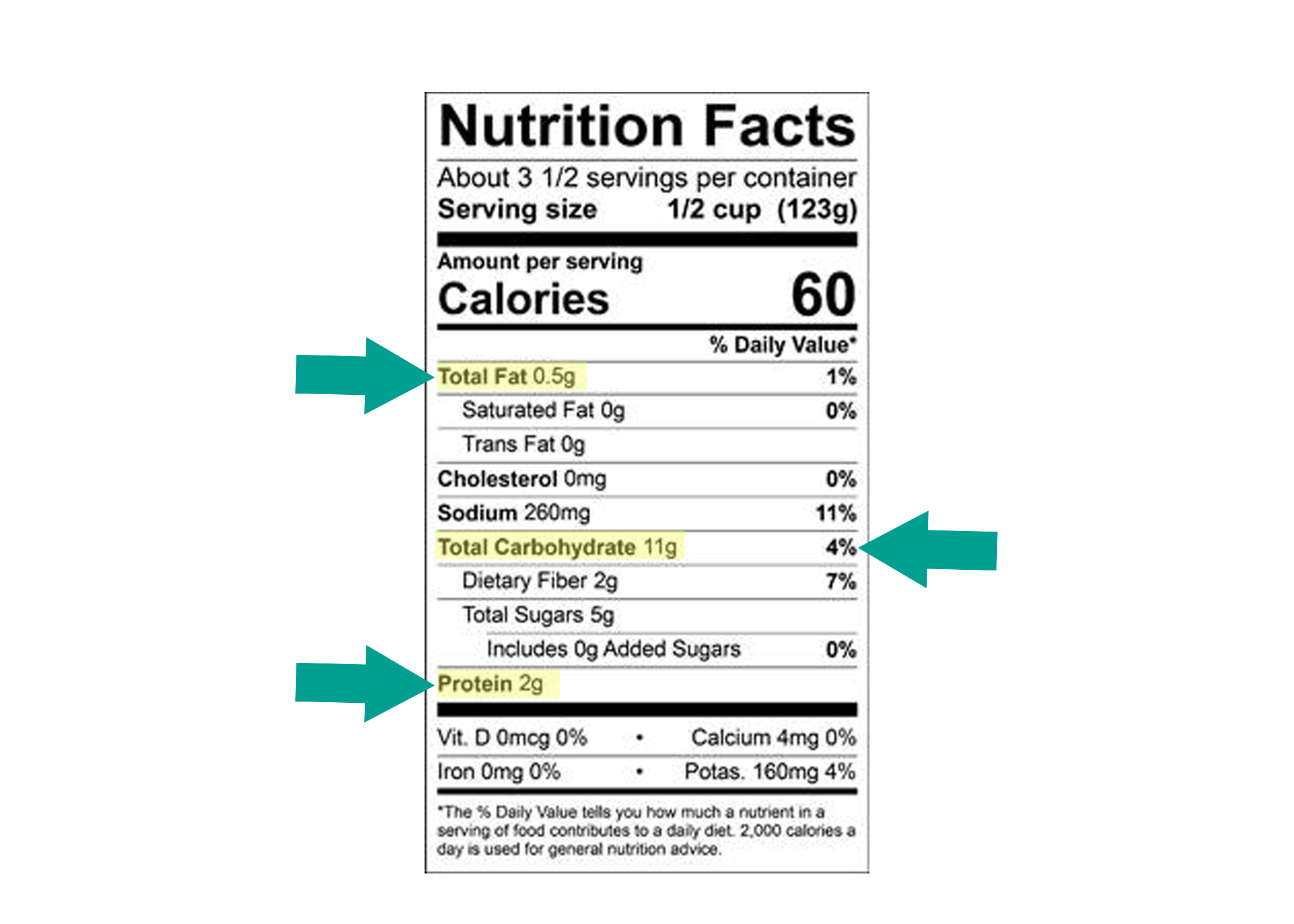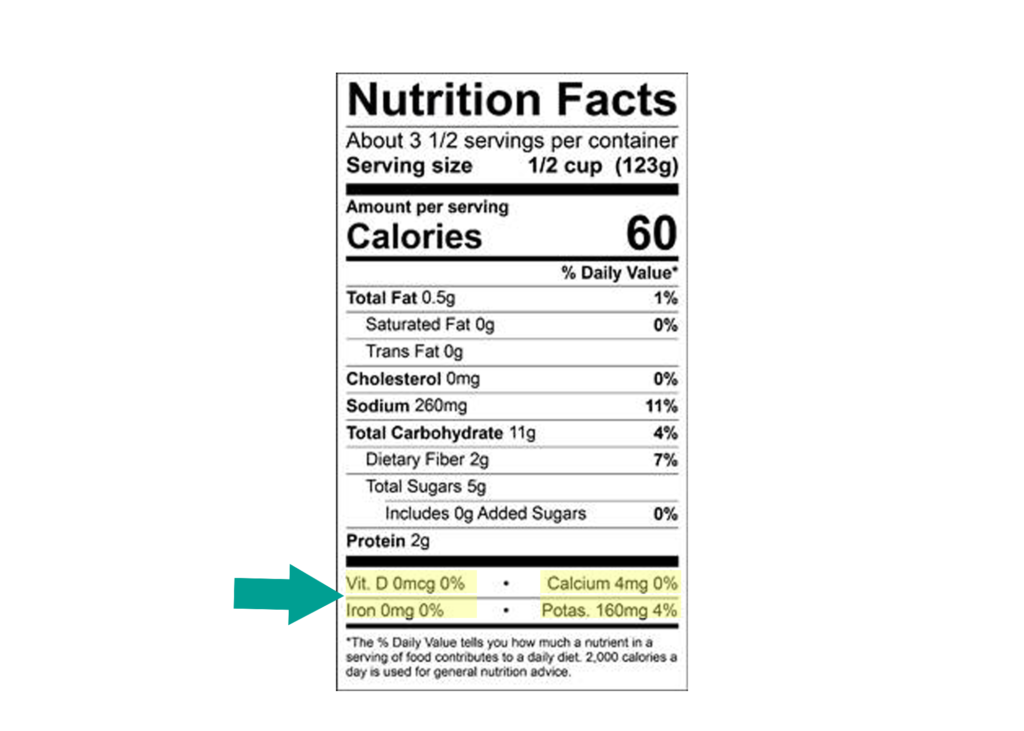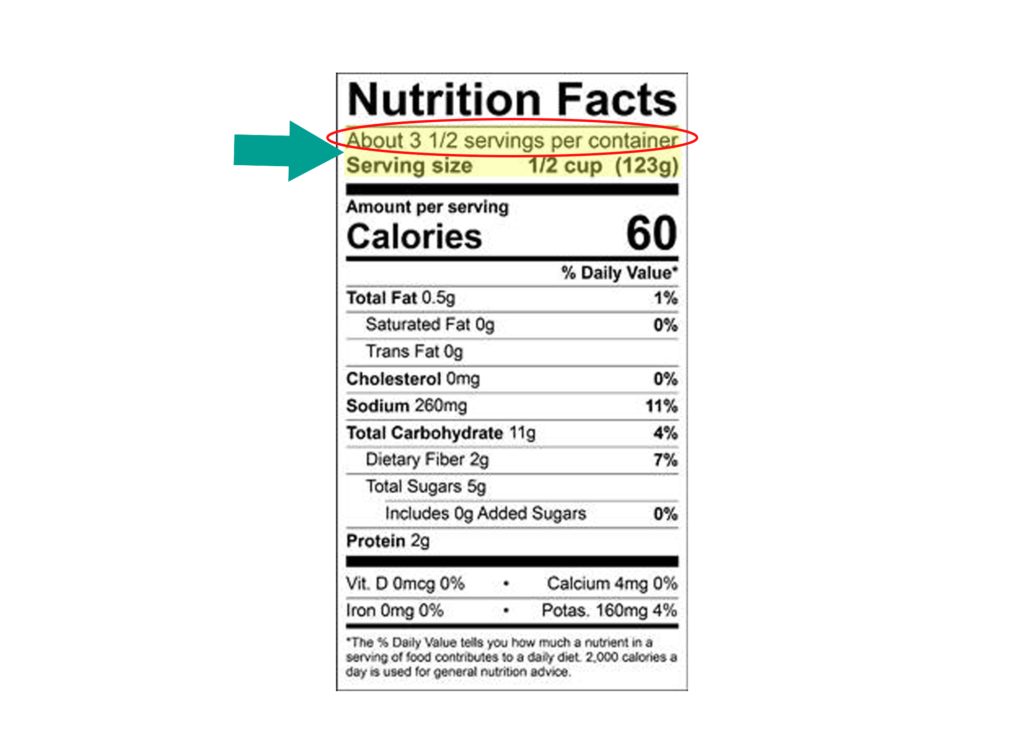When it comes to eating mindfully, are you really eating mindlessly? It can be an easy trap to slip into. To make better food choices, knowing exactly what you’re eating based on nutrition labels can be a hugely helpful tool.
One study showed that 57.7% of participants “don’t understand” the food nutrition labels.
We all have an individual required daily caloric intake (DCI) amount. By understanding how we are fueling our bodies through reading nutrition labels we can more easily improve health and achieve weight loss faster (if that is your goal).
However, knowing how to read nutrition labels may enlighten you to a bitter-sweet food-reality where you find those food items you once thought were healthy… were actually pushing you further away from achieving your unique health goals.
Recap on the Typical ‘Standard American Diet’ (SAD)
The U.S. is known for our western diet, commonly known as Standard American Diet (SAD), which is characterized by high sugar intake (ex: high-fructose corn syrup), lots of refined carb, high-fat dairy, tons of red meat, fried foods, and overall instant gratification.
Our western diet oftentimes can mislead us into thinking we’re making healthier choices when in reality we’re munching on mass quantities of unnatural ingredients or added sugars with poor nutritional value – not whole, clean foods.
For short-term and long-term health it is extremely important that we know what we’re actually putting into our bodies. From 1999–2000 through 2017–2018, the prevalence of obesity increased from 30.5% to 42.4%, and the prevalence of severe obesity increased from 4.7% to 9.2%.
Unhealthy Foods Are Chemically Designed to be Delicious
Not only does the SAD encourage weight gain due to its high-sugar, high-fat, high-preservatives focus, but this kind of diet can actually change-up the chemistry of our brains so that we continue to crave what is unnatural.
For example, processed foods with the 20+ added ingredients are designed to be extra delicious, releasing feel-good chemicals in our brains. To top it off, these “foods” are made-up of high-fat and high-sugar ingredients which can lead to sugar imbalances in the blood.
In summary, it’s not just your will-power you’re struggling with when you’re trying to stay on your healthy diet plan, it’s literally your body craving those addictive chemical ingredients to get back to that ‘feel-good’ state.
So how do we break the cycle? We learn how to read nutrition labels to identify which foods are best for our overall health & wellness goals.
Understanding Macronutrients: Protein, Carbs & Fats
Macros, short for macronutrients, are the three types of nutrients that are required in large quantities in our diet to support growth, metabolism, and other essential bodily functions. The three types of macros are carbohydrates, proteins, and fats.
When reading a nutrition label, you can find information about the macros of the food or beverage product. The amount of each macro is typically listed in grams, and the total number of calories in the product is also provided.
Where are the macronutrients located on a nutritional label? See image:

It’s important to know the macros in a food or beverage product because they can have a significant impact on your health and fitness goals.
For example, if you’re trying to lose weight, you may want to look for foods that are lower in calories and higher in protein and fiber, as these can help you feel fuller for longer periods of time and may help you eat fewer calories overall.
If you’re an athlete or someone who exercises frequently, you may need to consume more carbohydrates to fuel your workouts, and more protein to support muscle growth and repair.
On the other hand, if you have certain medical conditions, such as diabetes or high blood pressure, you may need to limit your intake of certain macros, such as carbohydrates and sodium.
Overall, understanding macros and how they impact your health and fitness goals can help you make more informed decisions about the foods and beverages you consume. It’s also important to remember that everyone’s nutritional needs are different, so it’s always a good idea to speak with a registered dietitian or other qualified healthcare provider to get personalized nutrition advice.
Micronutrients That Impact Health and Hormones
Micronutrients, vitamins and minerals needed in small amounts, are crucial regulators of hormone production, function, and balance. Hormones are chemical messengers, and their synthesis, release, and receptor activity often rely on specific micronutrients.
Examples of micronutrients include vitamin C, vitamin D, iron, and calcium.

When reading a nutrition label, you can find information about the micronutrients in the food or beverage product. The amount of each micronutrient is typically listed as a percentage of the Daily Value (DV) for that nutrient, based on a 2,000 calorie per day diet.
It’s important to know the micronutrients in a food or beverage product because they can have a significant impact on your overall health and wellbeing.
For example, if you’re not getting enough iron in your diet, you may be at risk for developing iron-deficiency anemia, which can cause fatigue, weakness, and other health problems. If you’re not getting enough vitamin D, you may be at risk for developing bone disorders such as osteoporosis.
By reading the micronutrient information on a nutrition label, you can make more informed decisions about the foods and beverages you consume and ensure that you’re getting the nutrients you need to support your health and wellbeing.
If you find that you’re consistently not getting enough of a certain micronutrient in your diet, you may want to consider incorporating more foods that are rich in that nutrient or taking a supplement (with the advice of a healthcare professional).
It’s important to note that while micronutrients are important, it’s also important to focus on consuming a balanced diet that includes a variety of different foods, rather than solely relying on supplements or fortified foods to meet your nutritional needs.
Serving Sizes: Avoid Hidden Calories
The serving size on a nutrition label is important for health because it helps you understand the amount of food or beverage product that you’re consuming and how many nutrients you’re getting from that amount.
For example, if the serving size for a bag of chips is 1 ounce (28 grams) and you eat the entire bag, but the nutrition label’s information is based on a 1-ounce serving, you need to multiply the nutrient values by the number of servings you actually ate. This means that if the bag contains 4 servings, you need to multiply the nutrient values by 4 to understand how many nutrients you actually consumed.
If you don’t pay attention to the serving size, you may end up consuming more calories, fat, sugar, or other nutrients than you intended. This can lead to overconsumption of calories and nutrients, which can contribute to weight gain and other health problems.

By paying attention to serving sizes, you can make more informed decisions about the foods and beverages you consume and ensure that you’re consuming the appropriate amounts of calories and nutrients to support your health and wellbeing. It’s also important to remember that the serving size listed on the nutrition label may not be the same as the portion size that you choose to consume, so it’s important to use measuring cups or a food scale to accurately measure your portions.
5 Quick Tips on How To Understand and Use the Nutrition Facts Label
1 – Whole food items or less ingredients
The best way to avoid this addictive routine is to focus on the nutrition label and including whole-food items or food items with 5 or less ingredients.
2 – Know your ingredients
The best label is no label i.e. fruits, veggies, lean meats, etc. But if you’re going to include some non-perishable food items, understand what you’re grabbing off the shelf by reading the food nutrition labels. Hint: If you can’t pronounce an ingredient on the nutrition label, put it back!
3 – Watch out for terms like ‘low-fat’, ‘low-sugar’, etc
Just because something says “low-fat,” “low-sugar,” “low-sodium,” or “healthy,” doesn’t necessarily mean it’s good for your body. Most of the time, these products are cutting back in one area, but compensating by adding something even more unhealthy to make up for flavor.
For example, “sugar-free” might mean they’re adding artificial sweeteners like sucralose/Splenda or aspartame/Equal which fall on the artificial side of things in comparison to a sweetener life Stevia. However, food items with these natural sweetener swaps are typically OK for most.
4 – Choose food items based off your health goals
Depending on if your goal is to lose weight, maintain weight, gain weight, build muscle, lose fat, etc. you will want to first assess the macronutrients on the nutrition label – protein, carbohydrates, and fats. Choose food items that provide the right macro ratios per your individual goals & health needs.
5 – Double check serving sizes
No matter which diet you’re on, eating calories in excess or over your Daily Caloric needs will cause fat storage in most cases.
To avoid over-eating, its helpful to check nutrition labels for serving sizes. Choose food items with lower-calorie, larger serving size options. Being able to indulge in higher-volume, lower calorie foods will help to keep you fuller longer.
Conclusion
We are organic and natural beings and choosing a diet rich in organic, natural whole foods makes the most sense when it comes to optimally supporting our health.
By understanding the nutritional makeup of the foods you put into your body you can more easily reach health goals.
When choosing foods at the grocery store, its best to focus on simplicity when reading the nutrition labels – the fewer ingredients the better.
Need some help getting started? Our health coaches work with you to build out meal plans and grocery supplies based on YOUR body’s needs.

